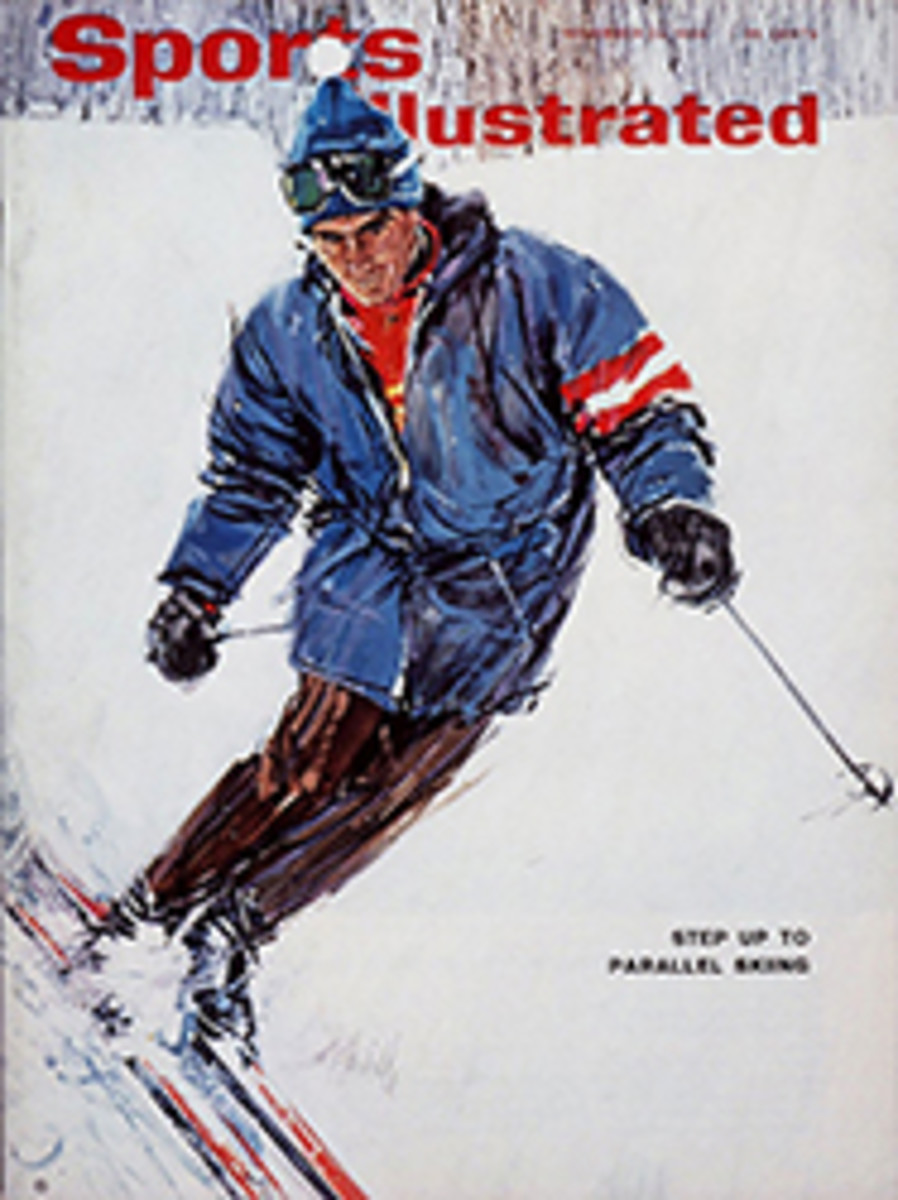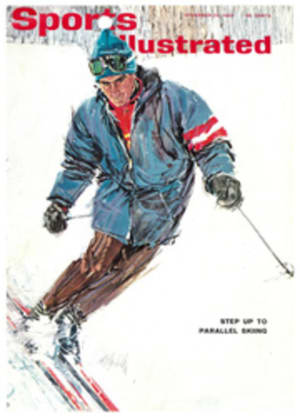
New heel-release bindings are the most controversial ski gear since buckle boots
A skier, like the golfer in pursuit of a magic putting formula, is forever in search of a shiny piece of equipment to solve the problems of technique that lie between the man and the fullest enjoyment of his sport. This season, the shiniest cure-alls are new heel-release bindings, and they are being made by every important name in the ski-binding-manufacture field. In theory, the perfect binding would combine the stability of a racer's long thong with the maximum safety available in a release binding. But no binding yet offers this combination perfectly. The new heel-release bindings should be measured by how close they come to these ideals: Are they too difficult to adjust? Do they clog with ice? Are they safer than front-throw cable release systems? Are they too bulky or too heavy for a recreational skier? Will they, for racers, replace long-thong turntables? The new heel releases are an extra expense in an already expensive sport: are they worth the investment? The four new designs illustrated on this and the following pages appear to be the best of the new releases, but in appraising them each skier will have to answer many of the foregoing questions for himself.
Many heel-releasing step-in bindings have been criticized as too heavy or too bulky—potentially dangerous in a windmilling fall. Iselin Imports" new Contact Skimatic is one of the lightest and most compact step-in units available. The entire binding (toepiece and heel release) weighs 14 ounces, and is made of a frost-resistant alloy of silicone, aluminum and magnesium. The heel unit operates on a cam principle and releases when the pressure of a forward, over-the-tips fall is applied. Messerschmitt, the German aircraft firm, designed this binding, already a popular one in Europe. More than half the skiers competing in the world skiing trials (at speeds of more than 100 miles an hour) in Italy this summer wore this binding. Iselin has already placed the binding in more than 100 U.S. ski shops for this season. A pair, including toepiece, heel release and safety strap, costs $30.
Miller, the American manufacturer, has combined the support of a long-thong turntable with a heel-releasing device. In its M6X releasing thong, the entire turntable and long thongs pull free of the ski in forward or twisting spills. The device snaps onto two spring-controlled bearings on either side of the ski. The amount of tension required for release can be adjusted, according to the manufacturer, by a qualified ski shop. Miller makes its releasing thong for the expert skier or racer, and it was the only American binding worn at the Innsbruck Olympics. It costs $28.50 with thong.
The engineers at the Look binding factory in France have modified their popular Look Nevada toepiece and mounted it upon a swiveling turntable. The heel-release mechanism is called the Grand Prix. Although it is somewhat bulky, it is easy to step into and it does have the slope-tested mechanism of the Look Nevada toepiece. The Grand Prix costs $24.50.
Like Head skis and Scott poles, the swiveling toepiece by Marker represented a design breakthrough in ski equipment during the 1950s. For its solution to the heel release problem, Marker has put a spring coil release at the heel of an adjustable cable front-throw. Its "Snaplock" device is intended to be used in conjunction with its famous Simplex toepiece or any other toepiece. When stress is applied, as in a forward or a twisting fall, the coil simply flies apart. Once apart, though, the "Snaplock" is a bit awkward to put together on a ski slope, especially if the skier is a novice. It costs $16.50 with cable release.
Regardless of what bindings a skier finally selects, however, it is absolutely essential to have them adjusted by the ski shop mechanic. In setting the proper amount of tension release, a skier's weight, strength and skiing experience must be considered. Release bindings for women and children must be especially well adjusted for proper release. Binding adjustments should be checked at the beginning of the season, after any hard siege of skiing and particularly after they have been shipped by air cargo.
ILLUSTRATION
CONTACT SKIMATIC
ILLUSTRATION
MILLER RELEASING THONG
ILLUSTRATION
LOOK GRAND PRIX
ILLUSTRATION
MARKER "SNAPLOCK"

